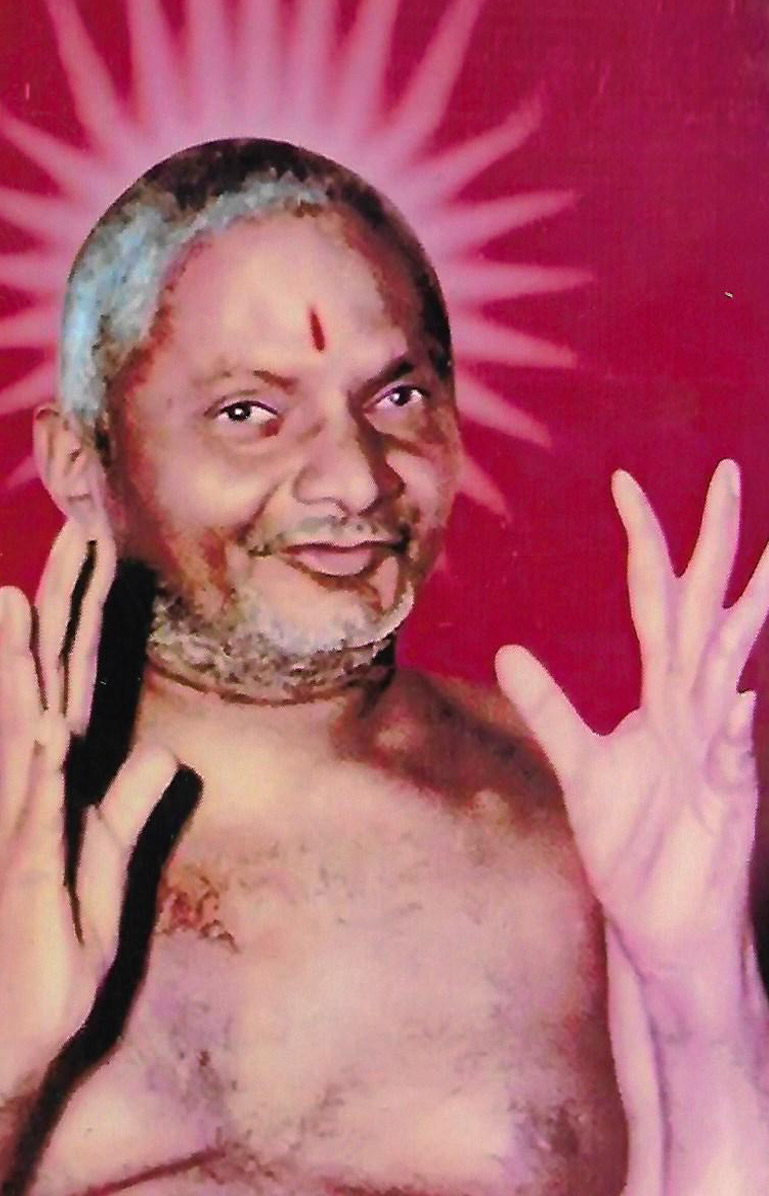
Biography
The Great Guru swami Nityanand sanctified Ganeshpuri. The Place is beautiful - so tranquil and serene. As soon as you enter the temple you feel the world slipping away and calm and serenity descending on you. The blessed peace of silence is tangible here. No voices are raised and people speak only when necessary.
Nitya-eternal, ananda-bliss Eternal bliss took a body and was known as Bhagwan Nityanand. No one knows about birth of Bhagwan Nityanand, genealogy or family background. Only body consciousness feeds on such things as social status, education, caste and reputation. Bhagwan was always in divine consciousness. From early childhood Bhagwan got his head shaved clean. On occasions wore the sanyasi ochre dress in early life leading to the belief that he was ordained in Nandapadma order of sanyasis. Leaving home, Bhagwan spent about 6 years in Himalayas and then as a young boy appeared in Kannangarh, where he was in nirvikalpa samadhi for a long time in a cave. There was no water around; Bhagwan created water stream from the cave which flows eversince that time. From that time the site is a pilgrimage site now called Guruvan.
Bhagwan was a born Siddha-perfect. He, still practised intense tapasaya to inspire the devotees. From a single rock Bhagwan got 40 meditation caves excavated. A large ashram sprang up there now a magnificent temple above that rock. In divine intoxication, like innocent free child, Avdoot Nityanand moved around Dharamsthala, Udipi, Mulki, Kanangarh, Gokarna and other places. People were relieved of there anxieties, distress, illnesses and miseries by his grace. The devout were blessed but unbelieving people beat him, threw stones, tried to burn him or poison him. The effect of beating, or burning or poisioning was suffered by them only and Bhagwan remained unperturbed.
After performing lilas in south like Lord Krishna in Gokul, Bhagwan covered on foot all the pilgrimage centers of India and came to live at Ganeshpuri to fulfill his divine mission.
Bhagwan led an extremely simple life. He took his bath before dawn. He ate very little. Another person tied his langoti (Hon cloth) if it fell off or fed him by hand. He was usually deeply immersed in divine consciousness, with his eyes closed and a beatific smile on his face. Mostly in silence, sometimes he answered an earnest seeker's question with a few simple words which expounded deep truth.